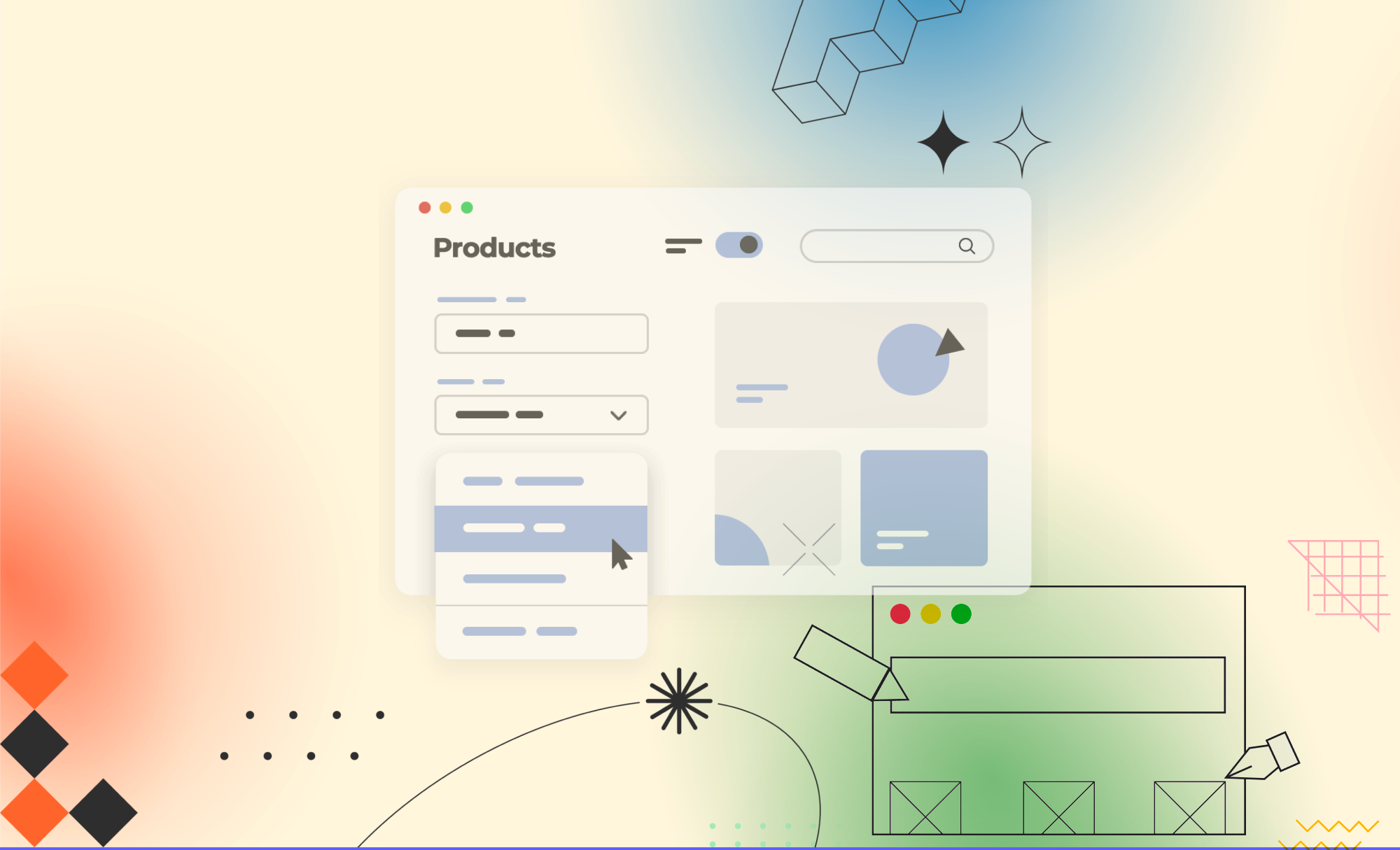
Imagine you're building your dream house. The first thing you do is call up an architect to whip up a killer plan that fits your budget, space, style, other requirements and constraints. Well, building a digital product is no different! Enter wireframing - the rockstar of product management. Wireframing is like the blueprint that shows where all the cool elements, like menus, images, and text, go on your webpage or app. In this blog, we're gonna jam about why wireframing is the life of the party in product management, helping you rock your way to digital success. Let's get the party started.
What is a wireframe?
Alright, let's break it down! A wireframe is a rough draft or sketch that shows where all the elements and features, like headings, buttons, menus, images, and boxes, groove on the page. Think of it as the funky foundation that sets the stage for an awesome digital product!
Wireframes are like the secret sauce of product development. They're a low-fidelity visual representation of a product's design that's created during the early stages of the creative process. You can cook up wireframes using specialized tools like Sketch, Figma, or Balsamiq and they serve as the blueprint for the final product design.
Pre-work: A must-have
Drawing an analogy with house planning, just like we engage in pre-planning activities such as exploring house designs, defining requirements and identifying constraints before constructing a house, investing time in pre-work is crucial before wireframing. This includes conducting research on user needs, analyzing the competition, and defining the requirements and constraints. By exploring various house designs, we can create a unique house plan that meets our specific requirements. Similarly, by examining similar apps, we can identify gaps in the market and define the features and unique selling proposition for our product.
It's important to note that wireframing is just the first step in creating a successful digital product. Investing time in pre-work can ultimately save time, money, and resources in the long run, just as pre-planning for a house can save resources during the construction phase.
Why use Wireframes?
Imagine you're planning a road trip with your friends. You wouldn't hit the road without a map or GPS, right? Wireframes are like that map or GPS for your product development journey, helping you navigate towards a successful end product. Here's how wireframes can be your trusted travel companion:
Getting early feedback
Like a pit stop, wireframes help in getting early feedback on your product design. Just as you would stop at a gas station to check your route and get directions, wireframes allow you to gather feedback from stakeholders, team members, and end-users early in the development process. This helps you make necessary adjustments and ensure everyone is on the same page before moving forward.
Start with a clear layout
Wireframes are like a route map, providing a clear layout of your product's design. Just as a route map helps you plan your route, wireframes help you plan the layout of your product's user interface, interactions, and user flow. Starting with a clear layout in wireframes sets a solid foundation for the rest of the development process.
Clarify product requirements
Just as a contract outlines the terms and conditions of an agreement, wireframes visually represent the product design, making it easier to communicate and align with stakeholders, team members, and clients. This ensures that everyone has a clear understanding of the product's intended design and functionality.
Reduce development costs
Wireframes help you identify and address potential design flaws or usability issues early in the development process. Just as you would fix a flat tire before it causes more damage, wireframes allow you to catch and fix design issues before they become costly to address in later stages of development. This helps you save time and resources, and ensures a smoother development process.
Improve collaboration
Facilitating collaboration among different teams and stakeholders, wireframes is like a common language that allows you to communicate with people from different backgrounds, wireframes provide a visual representation that everyone can understand and discuss. This promotes collaboration and fosters a shared understanding of the product design, resulting in a better end product.
Speed up development
Providing a turbo boost for development, wireframes provide a clear plan for the product's design. Just as a clear plan helps you reach your destination faster, wireframes provide a blueprint for development teams to follow, allowing them to focus on coding and implementing features, rather than spending time on design decisions. This speeds up the development process and helps you deliver the product more efficiently.
Test and validate ideas
Allowing you to gather feedback and validate your design concepts a wireframe is like a test drive for your product ideas. Just as you would test drive a car to ensure it meets your requirements, wireframes can be used to conduct user testing and gather valuable insights. This helps you make necessary improvements and ensure that the final product meets the needs of your end-users.
So, there you have it! Just like Tony Stark uses blueprints to build his high-tech suits in Iron Man, wireframes serve as the blueprint for product managers and their teams. They help us visualize the product design, catch potential issues early on, and ensure everyone is working towards the same goal, just like the Avengers assembling for a mission. Wireframes are like the hidden gem in our product development toolkit, helping us save costs, speed up development, and validate our ideas with users, much like Hermione's time-turner in Harry Potter.
In a nutshell, wireframes are product manager’s superhero sidekick, aiding us in creating top-notch products that hit the mark. So, let's keep wireframing, keep iterating, and keep building amazing products that wow our customers and stakeholders.

